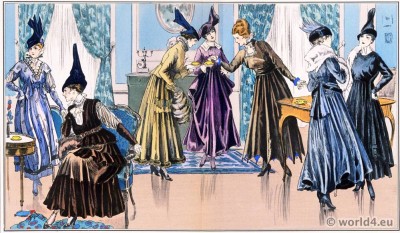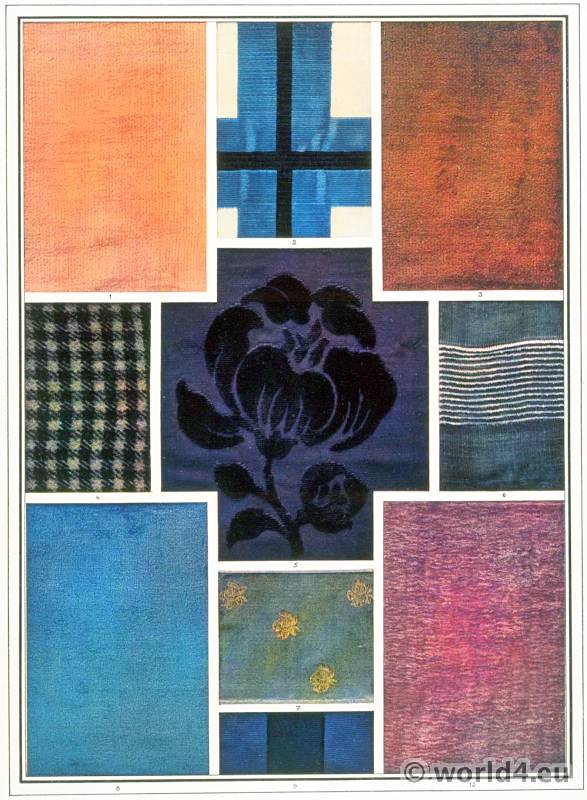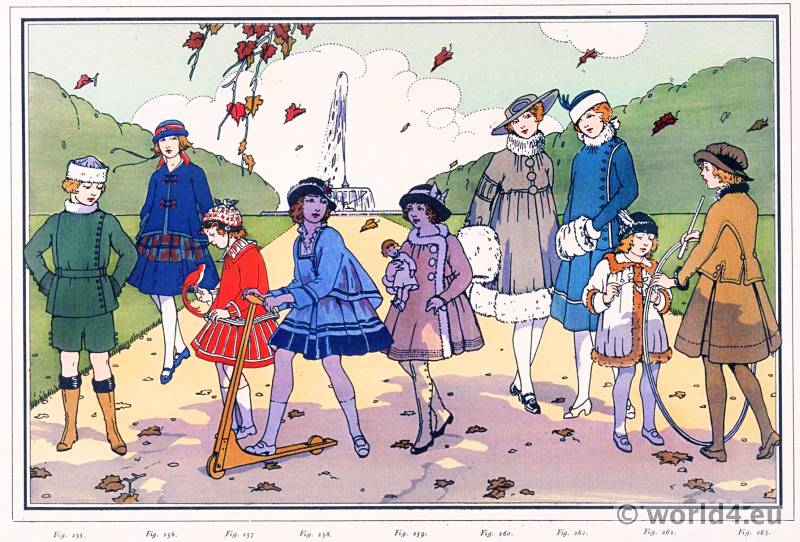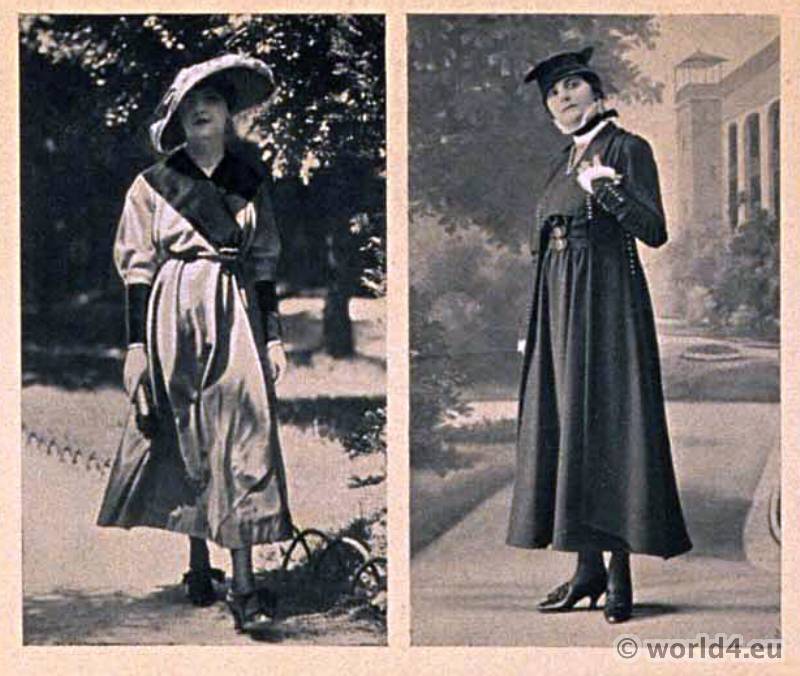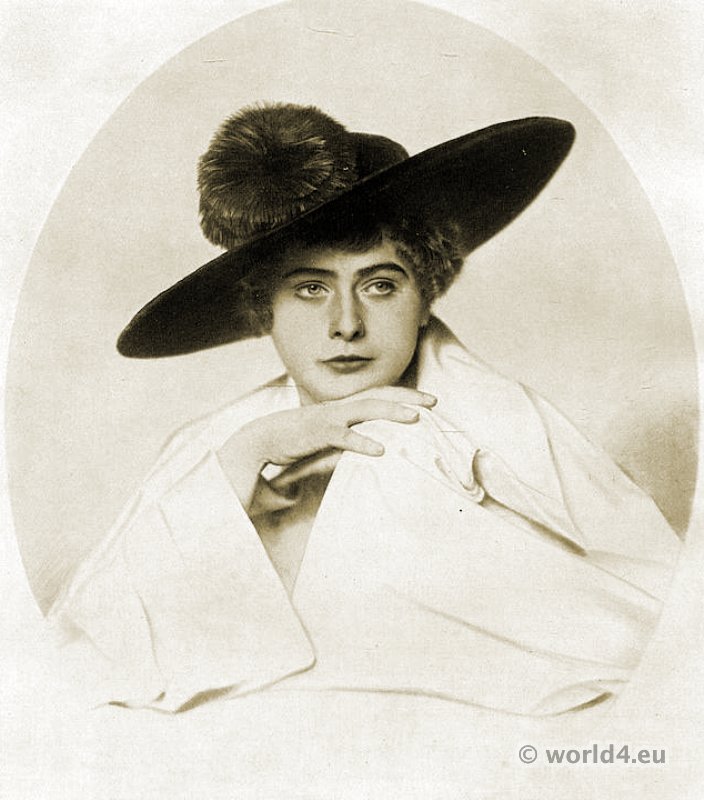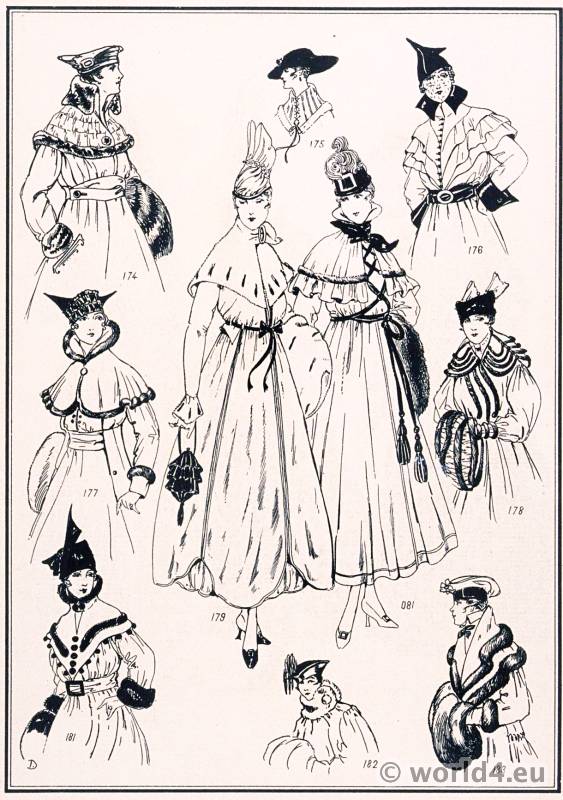Pour l’Heure du Thé. Le style parisien, 1915. Le style parisien 1915.
Pour l’Heure du Thé. Premet, Beer, Dœuillet, Chéruit, Redfern, Paquin, Jenny.
From left to right.
- (Premet). Dress in taffetas broché in grey trimmed with skunk; border of dress in chiffon to match; bodice trimmed with a scalloped ” biais ” of taffetas; yoke and collar in lace. Sleeves in chiffon of matching shades lined with blue chiffon. Smocking at the wrists and at the waist behind.
- (Beer). Dress in ” tête et nêgre ” silk muslin. Small ” casaquin ” in velvet, armhole trimmed with sable. Collar and cuffs of flesh colores muslin; bodice embroidered in silver, belt of silver braid with tassels to match.
- (Dœuillet). Dress in beige duveteen, large pockets trimmed with rouleaux of similar stuff. Band of ” putois ” (yellow skunk).
- (Chéruit). Dress in violet corded silk. Lawn collar. Violet silk embroidery.
- (Redfern). Dress in pliant dark brown velvet. Blond lace. Scalloped skirt lined with blue taffeta.
- (Paquin). Dress in slate colored silk trimmed with blue velvet. Guimpe in chiffon. Waistbelt edged with fleeting of black velvet, made into a large bow behind. Skirt gathered into a broad crossway piece and cut out at the foot into four large rounded scallops. The foundation of the skirt is trimmed with several rows of flutings in black velvet.
- (Jenny). Frock in dark blue velvet. Collar and gimp of white silk. Gold braid passing round the neck and down the back with a very novel effect.
Gallery: Le style parisien. Planche XII-XIII. Supplément du ” Style Parisian ” No 3. Le Directeur – Gérant: Lucien Vogel.
Discover more from World4 Costume Culture History
Subscribe to get the latest posts sent to your email.

